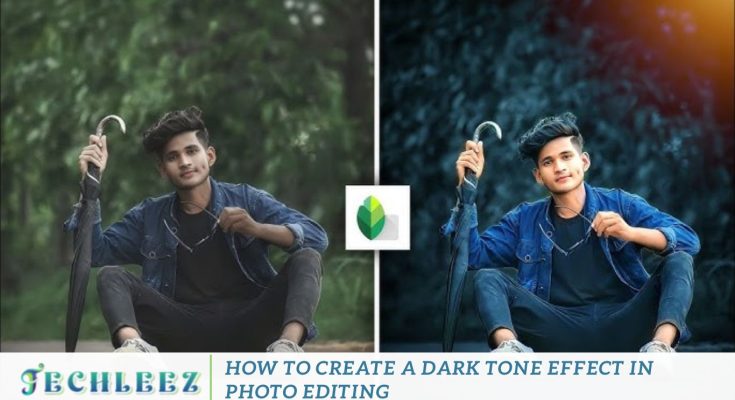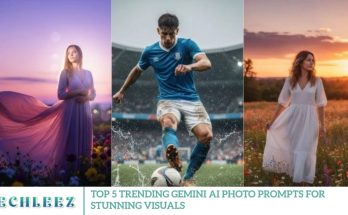Editing is just as crucial as capturing the perfect shot. One technique that consistently delivers dramatic and captivating results is Dark Tone Effect Photo Editing. This method enhances ordinary photos by deepening shadows, increasing contrast, and softening highlights, resulting in visually striking masterpieces. Whether for professional projects or creative expression, the dark tone effect has become a favorite among photographers and editors looking to add depth, mood, and sophistication to their images.
The dark tone effect in photo editing is a powerful technique that enhances an image’s depth, mood, and intensity. By manipulating shadows, contrast, and color grading, photographers and designers can create a dramatic and cinematic feel. This effect is widely used in fashion photography, landscape shots, portraits, and artistic compositions. In this guide, we will explore the dark tone effect, its benefits, how to apply it using different software, and expert tips to achieve professional results.
Dark Tone Effect Photo Editing has unique characteristics, practical applications, and pros and cons.
What is the Dark Tone Effect in Photo Editing?
The dark tone effect refers to an editing style that emphasizes deep shadows, rich blacks, and muted highlights to create a moody and atmospheric look. It often involves:
- Lowering brightness and exposure to darken the overall image.
- Enhancing contrast to make details stand out.
- Adjusting color tones to achieve a calm, warm, or desaturated feel.
- Applying vignettes and selective blurring to focus on the subject.
- Utilizing texture and grain effects for a cinematic look.
Dark Tone Effect Photo Editing
Dark-tone photo Editing is a powerful technique designed to amplify an image’s depth and drama. By deepening shadows, toning down highlights, and adjusting contrast, editors achieve a moody, cinematic, and visually compelling effect. This technique is widely embraced in fashion photography, fine art, landscapes, and social media content, where it enhances emotional impact and creates a striking, immersive aesthetic.
Key Features of the Dark Tone Effect:
- Enhanced Shadows: Deepened shadows add depth and intrigue, making images more dramatic and visually compelling.
- Reduced Highlights: Bright areas are softened to create a balanced, moody aesthetic.
- Color Grading: Muted or cool tones are often applied to maintain a cohesive and atmospheric feel.
- High Contrast: Strong contrast directs focus to key elements, enhancing visual impact.
Specialty in Dark Tone Effect Photo Editing
What makes Dark Tone Effect Photo Editing truly stand out is its ability to evoke emotion and convey a compelling story. Here are some key aspects that define its uniqueness:
Mood Creation
Dark tones effectively set the atmosphere, whether it’s mysterious, romantic, or intensely dramatic.
Timeless Appeal
This effect lends photos a classic, enduring quality, making them ideal for art galleries, high-end portfolios, and fine art photography.
Enhanced Focus
Dark tone editing reduces distractions and emphasizes the subject, ensuring the viewer’s attention remains on the most crucial elements of the image.
Customizable Aesthetic
From gothic and moody to cinematic and artistic, the dark tone effect offers immense versatility, adapting to various creative styles and visions.
Uses of Dark Tone Effect Photo Editing
The dark tone effect is widely embraced across different fields for its artistic and professional appeal. Here’s a breakdown of its typical applications:
- Fashion Photography – Enhances the depth and drama of editorial shoots, adding a high-fashion, moody aesthetic.
- Fine Art Photography – Creates visually compelling and emotionally evocative pieces suitable for galleries and exhibitions.
- Landscape Photography – Adds intensity and mystery to nature shots, emphasizing dramatic skies and textured scenery.
- Portrait Photography – Highlights facial expressions and emotions by using deep contrasts and subtle lighting.
- Social Media & Branding – Provides a striking, cinematic look that makes personal and commercial content stand out.
- Cinematic & Editorial Projects – Used in filmmaking and magazine spreads to craft a sophisticated and immersive visual style.
Central Theme of Dark Tone Effect Photo
The essence of Dark Tone Effect Photo Editing lies in storytelling and emotional depth. This technique goes beyond mere aesthetics, using the interplay of light and shadow to craft compelling narratives and transform ordinary images into powerful visual experiences.
Thematic Highlights:
- Mystery and Drama: Frequently used in cinematic photography to create suspense and intrigue.
- Elegance and Sophistication: A go-to style for high-fashion and luxury brand photography, exuding refinement.
- Nostalgia: Muted tones evoke a vintage or timeless feel, adding emotional depth and a sense of the past.
Pros and Cons of Dark Tone Effect Photo
Pros
- Creates a dramatic and visually striking aesthetic.
- Enhances storytelling by adding depth and mood.
- Customizable to fit various styles and themes.
- Helps focus attention on the subject by reducing distractions.
- Works well across multiple genres—fashion, landscape, and portraits.
Cons
- It may not suit all types of photography (e.g., bright, cheerful themes).
- Over-editing can result in unnatural or overly dark images.
- Requires a good understanding of editing tools for optimal results.
- Dark tones may obscure details in some photos.
- It can make pictures look overly somber if not used appropriately.
Benefits of Using Dark Filters
Using dark filters can dramatically transform the ambiance of a photo, adding sophistication, enhancing contrast, and drawing attention to specific elements.
Dark filters are especially effective for achieving a cinematic aesthetic, enriching textures, and adding depth to an image. They are widely used across various photography genres, including landscape, portrait, and product photography.
- Landscape Photography: Enhances the contrast between the sky and land, making the scenery more dramatic and visually striking.
- Portrait Photography: Adds a moody, artistic effect that highlights facial features and expressions.
- Product Photography: Creates a high-end, professional look, making products appear sleek and refined.
Expert Tips for Perfecting the Dark Tone Effect
To achieve professional-quality results, consider these expert tips:
- Use Natural Lighting Wisely – Soft light from a golden hour or diffused indoor lighting enhances dark tone edits naturally.
- Experiment with Color Tones – Dark tone images don’t always have to be black and white; subtle blue, green, or sepia tones can add uniqueness.
- Avoid Overediting – Excessive contrast, shadows, or grain can make the image look unnatural.
- Focus on Composition – Leading lines, negative space, and subject placement enhance the impact of dark-tone photography.
- Use a Calibrated Screen – Editing on a high-quality display ensures accurate dark tone adjustments without losing essential details.
Frequently Asked Questions
What is the Dark Tone Effect in photo editing?
The Dark Tone Effect is a photo editing technique that enhances shadows, deepens colors, and reduces highlights to create a moody, dramatic, or cinematic look. It’s often used in portrait, urban, and gothic photography to add intensity and depth.
Which colors work best with the Dark Tone Effect?
Deep blacks, dark blues, desaturated browns, and cool grays are commonly used. Some editors add subtle tints of teal or red for cinematic contrast.
Will the Dark Tone Effect work on any photo?
While it works best on portraits, urban landscapes, and night photography, it might not be ideal for bright, vibrant, or nature-focused images.
Does applying a Dark Tone Effect reduce image quality?
If done correctly, no. However, excessive contrast adjustments or overuse of filters can lead to loss of detail or unwanted noise in shadows. Can I apply the Dark Tone Effect without professional software?
Yes, mobile apps like Lightroom Mobile, VSCO, and Snapseed offer free or paid presets to achieve a similar effect.
Conclusion
The dark tone effect in photo editing is an excellent way to create striking, moody, and dramatic images. Whether you’re a professional photographer or a hobbyist, mastering this technique can elevate your visual storytelling. By understanding the right tools, adjusting exposure, contrast, and colors, and applying expert tips, you can craft compelling images that leave a lasting impact.




